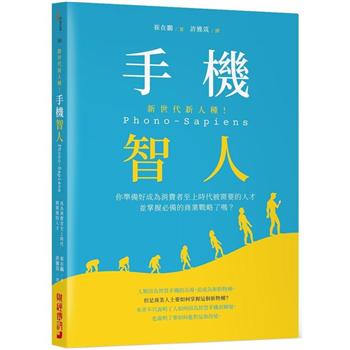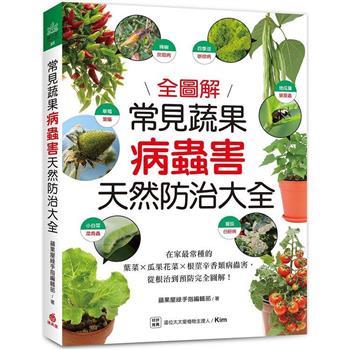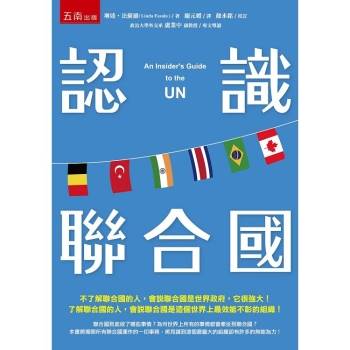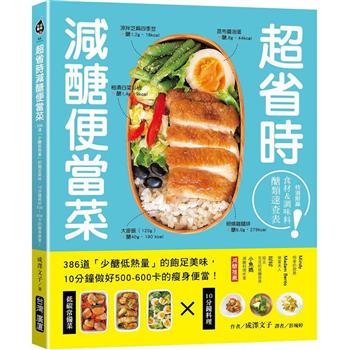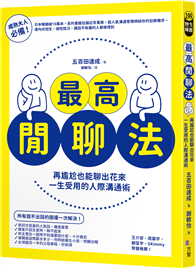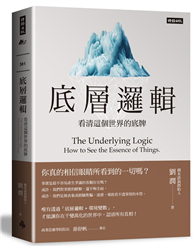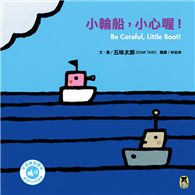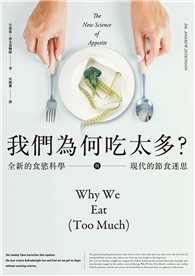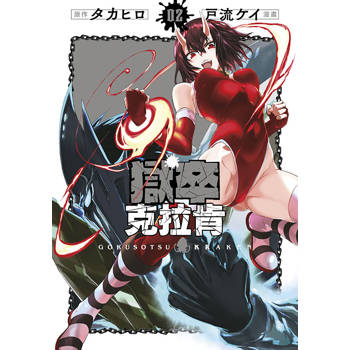| FindBook |
有 2 項符合
博物館漆畫歷險(中英雙語版)的圖書 |
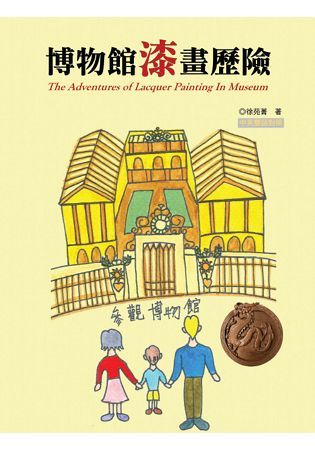 |
博物館漆畫歷險(中英雙語版) 作者:徐苑菁 出版社:漢世紀數位文化EHGBooks 出版日期:2016-10-01 規格:27.9*21.6cm / 70頁 |
| 圖書館借閱 |
| 國家圖書館 | 全國圖書書目資訊網 | 國立公共資訊圖書館 | 電子書服務平台 | MetaCat 跨館整合查詢 |
| 臺北市立圖書館 | 新北市立圖書館 | 基隆市公共圖書館 | 桃園市立圖書館 | 新竹縣公共圖書館 |
| 苗栗縣立圖書館 | 臺中市立圖書館 | 彰化縣公共圖書館 | 南投縣文化局 | 雲林縣公共圖書館 |
| 嘉義縣圖書館 | 臺南市立圖書館 | 高雄市立圖書館 | 屏東縣公共圖書館 | 宜蘭縣公共圖書館 |
| 花蓮縣文化局 | 臺東縣文化處 |
|
|
- 圖書簡介
這是一本全彩插畫書。
當西方遇到東方,現代穿越時空到古代,會交織出什麼樣的火花?漆畫裡靈魂的呼喚;三個穿越時空的時鐘門;像科學家又像哲學家的漆博士;巨書裡的四葉幸運草會說出什麼秘密?漆山臥虎藏龍、法力高強、彰顯奇蹟的守護神;海怪、火焰妖怪、毛毛蟲跳舞…黑魔法妖姬計畫佔領漆山、奪取黃金漆;海女王閃閃發亮的海波石;光精靈愛的光芒指引方向;金漆河流如何變成萬里漆長城?為了尋找千年古代漆陶俑將軍,前往地宮的路上會有什麼挑戰在等著?幽靈車站、鬼怪迷宮…還有夢幻糖果屋的美味漆饗宴;小男孩馬克思展開一段奇幻有趣的漆畫歷險。
When west meets east, time travel from modern to ancient, what kind of spark will come out? Spirit's calling of lacquer painting in museum, three time-space doors of clocks, Dr. Lacquer looks like a scientist and philosopher…Inside the giant book, the four-leaf clover will tell what secret? In the Lacquer Mountain, crouching tiger, hidden dragon, patron saints have supernatural powers to perform miracles. Sea monster, flame monster, caterpillars dancing... dark magic enchantress plans to occupy the lacquer mountain for getting golden lacquer. Ocean queen’s shiny wave stones. The light elf guides the direction by light of love. The golden lacquered river how to become the lacquered Great Wall? In order to find the millennium ancient lacquered terra-cotta general, on the way to the underground palace, what challenges is waiting for? Ghost station, demons maze…? In the candy house, there is a delicious lacquer feast…Little boy Max starts a fantasy and fun adventures of lacquer painting in museum.
龍南天然漆博物館Long Nan Museum of Natural Lacquer Wares
臺灣天然漆百年史,係臺灣的重要文化財,其中又以南投埔里的天然漆為主。臺灣於1918年,由臺灣總督府引進越南安南漆樹,在魚池鄉蓮華池試驗所試驗種植,早年先於苗栗銅鑼地區推廣。由於埔里地區盆地地形適合漆樹成長,於民國40年引進大埔里地區以農業方式大量生產,爾後開啟臺灣天然漆產業約30年的黃金歲月,極盛時期有近2萬人仰賴天然漆產業為生、漆農約萬餘人,漆樹最高種植面積高達2,500公頃。民國63年生漆年產量高達293公噸,其中半數外銷到日本,並造福國內大臺北市、新竹縣市、鹿港、大溪等地區數十萬人的重要高級家俱漆器產業,深受消費者喜好,並賺取龐大的外匯在案,埔里鎮堪稱臺灣天然漆的故鄉。可惜因時代變遷、社會經濟結構的改變,讓臺灣漆產業沒落。〝龍南天然漆博物館〞是臺灣碩果僅存的漆產業,百年博物館歷經徐家六代人的努力,肩負傳承使命感,讓臺灣特有客家漆文化產業永續發展、風華再現。
Hundreds history of Taiwan Natural Lacquer is important cultural property for Taiwan, lacquer well produced predominantly based in Nantou Puli. Since 1918, Rhus succedanea L. var. dumoutieri kudo had been brought into Taiwan because of good quantities and quality. In the beginning, lacquer trees was planted and researched by Taiwan Governer-General's Office in Lien Hua Chih Research Center, earlier periods lacquer trees widely planted in Miaoli Tongluo. Due to Puli basins is suitable for lacquer trees grow up, in 1950s agricultural lacquer production started in Puli area. At that time, it opened the Taiwan Natural Lacquer Industry for over 30 years prime time, there were nearly twenty thousands of people lived on lacquer, lacquer farmers about ten thousands of people, lacquer trees highest planted area up to 2,500 hectares. In 1974, the annual production of raw lacquer reached 293 tons, half of raw lacquer exported to Japan, have benefited over 100,000 people who worked for advanced lacquer furniture industry in Taipei, Hsinchu, Lugang, Daxi and other regions in Taiwan that consumers preferred and earned large amounts of foreign exchange. Therefore, Puli is the home of Taiwan's lacquer. However, times changed, social and economics structural transformation led to Taiwan lacquer industry declined. Long Nan Museum of Natural Lacquer Wares, the only remaining Taiwan’s lacquer industry has been manufacturing and exporting natural lacquer and excellent blend of beauty, elegance, great design, and extraordinary lacquer wares under strict inspection and quality control for more than 6 generations, trying best continuing Taiwan specific Hakka lacquer cultures and reappearing its glory.
In 1956, Hsu A Long, the originator of Long-Nan CO., LTD, continued natural lacquer business from ancestors. In 1960, he established corporation of Long Nan which is famous for excellent lacquer refining and best quality of natural lacquer. Almost 90% of natural lacquer produced in Taiwan must be inspected strictly by Hsu Yu-Fu, the CEO of Long-Nan CO., LTD, and approved under “龍” seal before exporting.
In 1988, Hsu Yu-Fu, the CEO of Long-Nan CO., LTD, based on the missions for preserving century history of Taiwan Natural Lacquer, he decided to form Long-Nan Museum of Natural Lacquer Wares. There are over ten thousands of historic-cultural collections of natural lacquer wares in Long-Nan Museum. Every year, not only Taiwan people but also many tourists come from all over the world to visit our museum. - 作者簡介
大家好,我是徐苑菁,很高興在此與您相遇!我來自台灣,MBA企管碩士,在新竹科學園區的科技公司工作數年,然後與法國先生相遇、相戀、到結婚,育有一子徐立(Max)。目前在龍南天然漆博物館,展現龍南六代客家堅忍硬頸的精神,致力漆藝文化傳承,導覽外國遊客認識天然漆,閒暇時間創作漆藝。
更多關於作者及龍南資訊,請參考以下社群網站:
龍南天然漆博物館:www.facebook.com/longnanlacquer
台法小王子 Max Petit Prince:www.facebook.com/MaxB0714
影音頻道:www.youtube.com/user/lucyhsu0622
ABOUT THE AUTHOR
Hello everyone, I’m Hsu Yuan-Ching, glad to meet you here! I come from Taiwan. MBA degree, have worked in technology companies in Hsinchu Science Park for years, and then get married to a french man, have one kid Max. Now I am in Long Nan Museum of Natural Lacquer Wares located in Puli, pass Long Nan’s Hakka spirit of perseverance for six generations, dedicated to the cultural inheritance of Lacquer arts, guided foreign visitors recognize natural lacquer and creating lacquer artwork in leisure time.
More information about author and Long Nan, please refers to network below:
龍南天然漆博物館:www.facebook.com/longnanlacquer
台法小王子 Max Petit Prince:www.facebook.com/MaxB0714
Video Channel:www.youtube.com/user/lucyhsu0622 - 目次
自序
Preface and Acknowledgements
龍南天然漆博物館
Long Nan Museum of Natural Lacquer Wares
台灣四種漆樹Four kinds of lacquer trees in Taiwan
漆 Lacquer of Chinese character
龍南濾漆工法 Long Nan Lacquer Filtering
龍南煉精漆技法 Long Nan Lacquer Refining
龍南雕漆器Long Nan Carved Lacquer
龍南客家桐花漆器 Long Nan Hakka Tung Flowers Lacquer
龍南桐花漆器食器Long Nan lacquered foodwares of Hakka Tung Flowers
龍南天然漆塗樂器 Long Nan Lacquered Musical Instruments
漆膜 Lacquer Membrane
龍南漆長城 Long Nan Lacquered Great Wall
龍南漆咖啡 Long Nan Lacquer Coffee
龍南漆蜂蜜 Long Nan Lacquer Honey
龍南舉辦“埔里天然漆抗癌國際發表會”
1漆畫的呼喚 Spirit's calling of lacquer painting in museum
2紅玫瑰鐘 Red rose clock
3漆博物館 Lacquer Museum
4尋找貝殼Looking for shells
5漆神祭 Lacquer God Festival
6海波石Wave stones
7海底車站鐘 Clock of undersea train station
8漆樹黑皮症 Black disease on lacquer trees
9蟲蟲跳舞 Caterpillars dancing
10漆長城 Lacquered great wall
11地宮探險 Underground palace expedition
12鬼怪迷宮 Demons maze
13漆陶俑將軍Lacquered terracotta general
14漆饗宴Lacquer feast
15地球鐘 Earth clock
16凡爾賽宮 Château de Versailles
作者簡介
ABOUT THE AUTHOR
|
